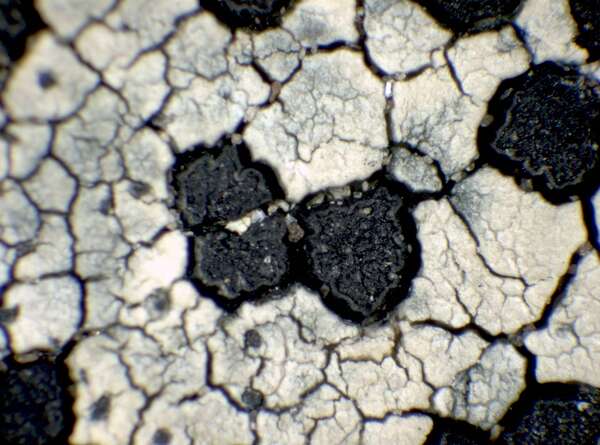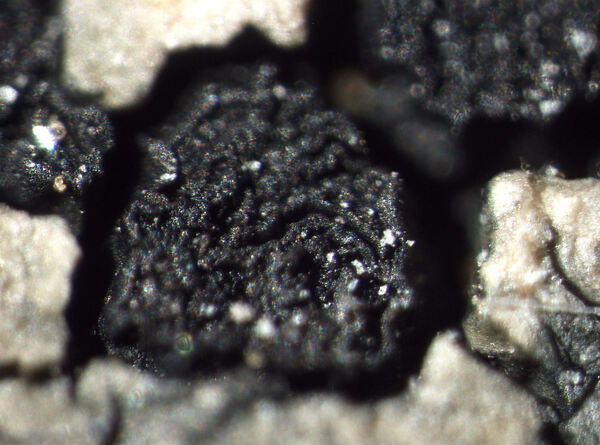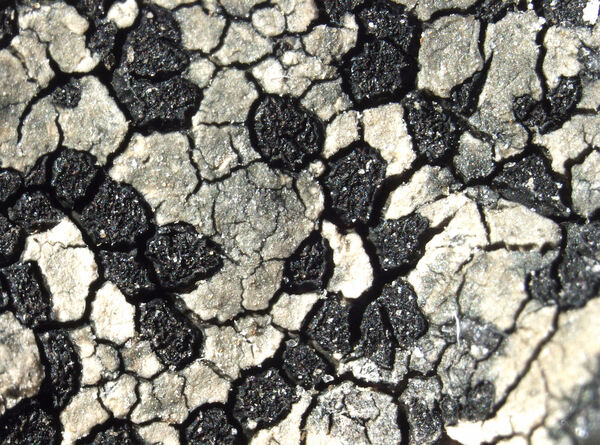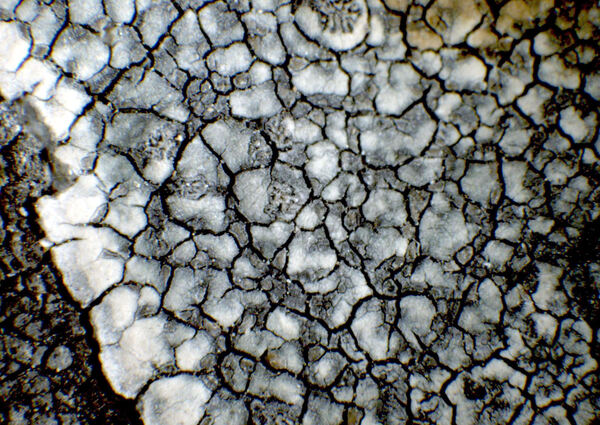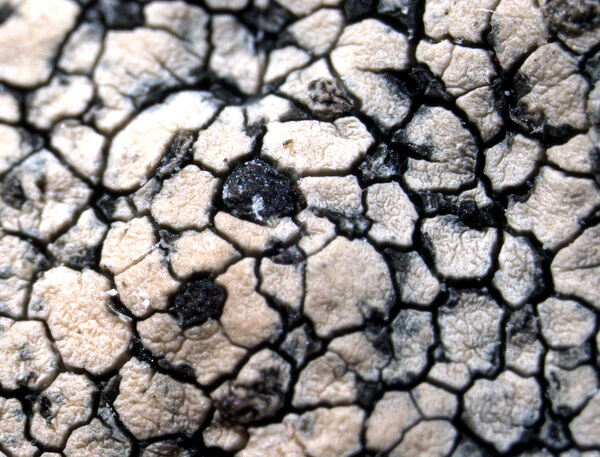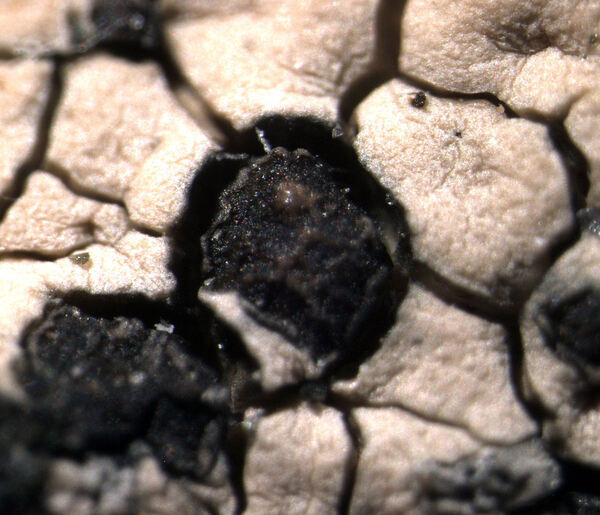Sporastatia polyspora (Nyl.) Grummann
Cat. Lich. Germ.: 23, 1963. Basionym: Gyrothecium polysporum Nyl. - Essai Nouv. Classif. Lich.: 186, 1854.
Synonyms: Biatorella cinerea (Schaer.) Th. Fr.; Lecidea morio var. cinerea Schaer.; Lecidea nigrocinerea Nyl.; Sporastatia cinerea (Schaer.) Körb.; Sporastatia morio var. cinerea (Schaer.) Körb.
Distribution: N - Frl (Tretiach & Hafellner 2000, Hafellner & al. 2014), Ven, TAA (Caniglia & al. 2002, Lang 2009, Hafellner & al. 2014, Nascimbene & al. 2022), Lomb (Hafellner & al. 2014), Piem (Isocrono & al. 2003, 2004, Hafellner & al. 2014), VA (Piervittori & al. 1998, Piervittori & Isocrono 1999), Emil (Tretiach & al. 2008, Fariselli & al. 2020).
Description: Thallus crustose, episubstratic, areolate, pale bluish grey to yellowish grey in peripheral parts, dull, forming up to 8(-12) cm wide patches, often delimited by a black prothallus. Areoles to 0.6(-1) mm wide and 0.4 mm thick, angular, flat, the peripheral ones usually not markedly elongate. Cortex 25-50 μm thick, dark olive-brown in upper part, of more or less vertically arranged hyphae, covered with a thin, colourless epinecral layer; algal layer continuous; medulla grey, with granules, I-. Apothecia lecideine, black, angular in outline, 0.2-0.8(-1.2) mm across, level with the areoles, separated from thallus by a crack, with a flat to slightly convex, very uneven, often cracked disc and a thin, protruding, cracked-uneven proper margin. Proper exciple carbonaceous, c. 10 μm thick, K+ reddish; epithecium pale to dark blue-green or olive-brown, K+ reddish, N+ red; hymenium colourless, 60-115 μm high, I+ deep blue; paraphyses 1.7-2 μm thick at mid-level, the apical cells 2.5-3 μm wide; hypothecium pale brownish grey, 35-50 μm thick, I+ blue. Asci 100-150-spored, broadly clavate, the apical dome uniformly K/I+ blue. Ascospores 1-celled, hyaline, subglobose, 3-5 x 2-4 μm. Photobiont chlorococcoid. Spot tests: thallus and medulla K-, C+ red, KC+ red, P-. Chemistry: gyrophoric acid and traces of lecanoric acid. Note: an arctic-alpine, circumpolar lichen found on steeply inclined to rain-sheltered , surfaces of hard siliceous rocks, with optimum above treeline, reaching the nival belt in the Alps; probably restricted to the Alps and the Northern Apennines in Italy.
Growth form: Crustose
Substrata: rocks
Photobiont: green algae other than Trentepohlia
Reproductive strategy: mainly sexual
In underhangs rarely wetted by rain
Commonnes-rarity: (info)
Alpine belt: very common
Subalpine belt: common
Oromediterranean belt: absent
Montane belt: absent
Submediterranean belt: absent
Padanian area: absent
Humid submediterranean belt: absent
Humid mediterranean belt: absent
Dry mediterranean belt: absent
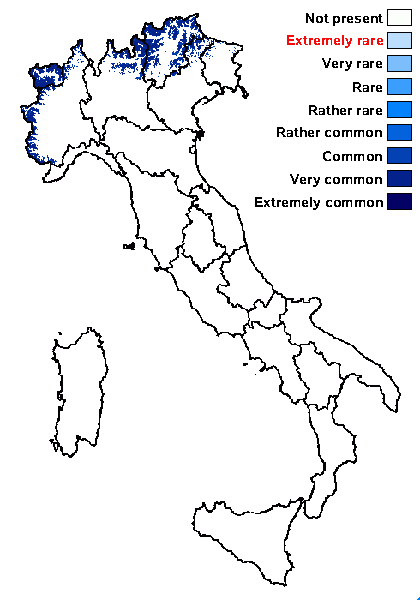
Predictive model
Herbarium samples
Growth form: Crustose
Substrata: rocks
Photobiont: green algae other than Trentepohlia
Reproductive strategy: mainly sexual
In underhangs rarely wetted by rain
Commonnes-rarity: (info)
Alpine belt: very common
Subalpine belt: common
Oromediterranean belt: absent
Montane belt: absent
Submediterranean belt: absent
Padanian area: absent
Humid submediterranean belt: absent
Humid mediterranean belt: absent
Dry mediterranean belt: absent

Predictive model
| Herbarium samples |
 Index Fungorum
Index Fungorum
 GBIF
GBIF
